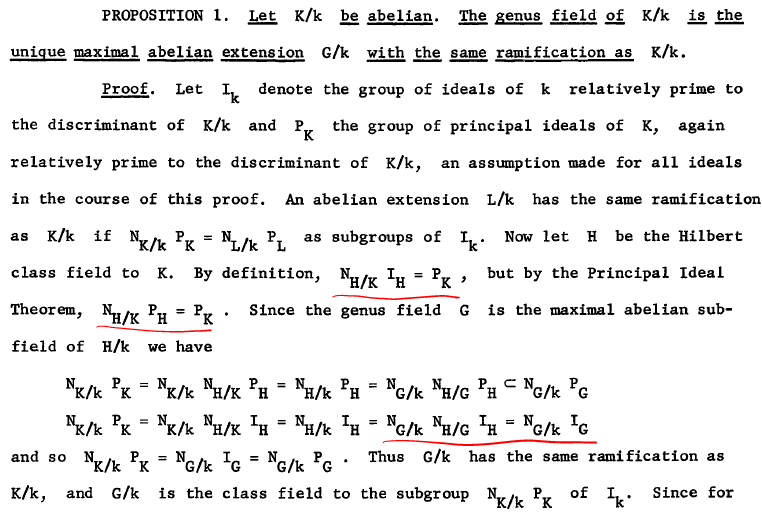I came across this proposition in an article about genus class fields.

I have a few questions about the parts that I have underlined in red. I don't understand why the norm map $N_{H/K}: I_H \to P_K$ is surjective. In this particular case, the image of $N_{H/K}$ is the free abelian group generated by $\{ \mathfrak{p}^{\mathfrak{f}(\mathfrak{p})} \}$ for $\mathfrak{p}$ unramified and $\mathfrak{f}(\mathfrak{p})$ is the order of the class of $\mathfrak{p}$ in the class group of $K$. So the image lands in $P_K$, but suppose we fix a prime $\mathfrak{p}$ non-principal and choose $\mathfrak{I}$ an ideal coprime to $\mathfrak{p}$ in the inverse class of $\mathfrak{p}$ (in the class group). $\mathfrak{p}\mathfrak{I} \in P_K$ but I don't see why it should be in the image of the norm map because $\mathfrak{p}^{\mathfrak{f}(\mathfrak{p})} \nmid \mathfrak{p}\mathfrak{I}$.
Also, I am not sure how the equality in the third underlined statement was obtained. Is it that $N_{H/G}$ is sujective? How can it be explained?
